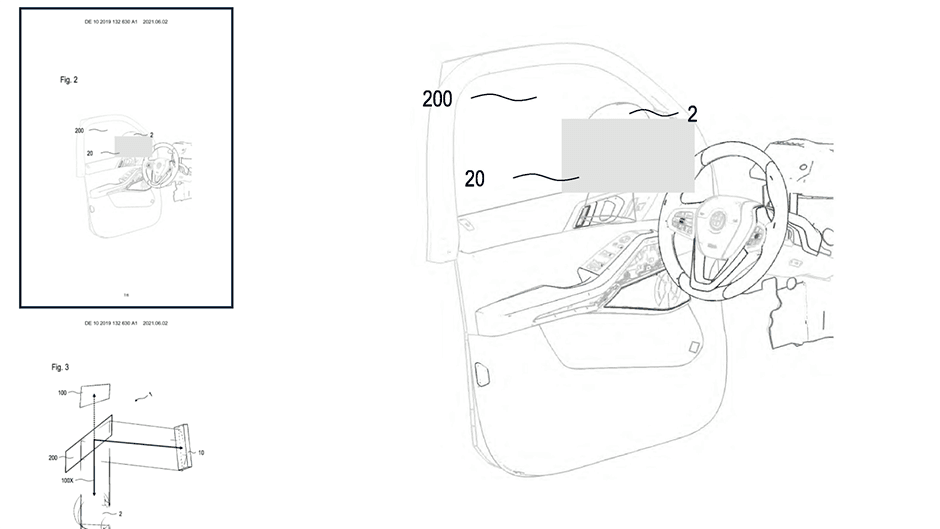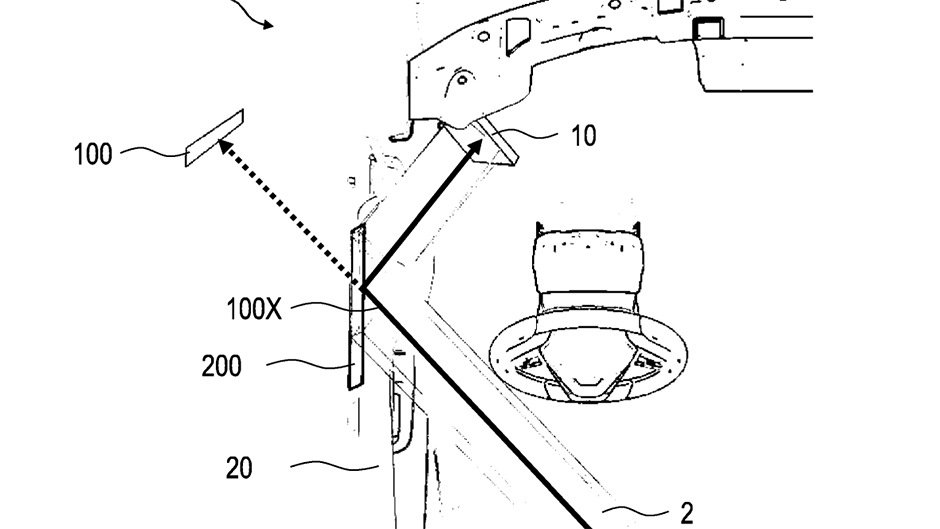Are virtual wing mirrors the next big thing? BMW thinks so
Words: Matthew Hansen
You’d think that the humble wing-mirror was something the motoring world had already perfected. But, it seems like the often forgotten fixture might be ripe for technological revolution.
A few brands have had a go at figuratively turning the wing mirror game upside down. Cars like the Audi e-tron and Honda e both use camera-based wing-mirrors, streaming a live feed of the outside world into screens inside the car.
Now BMW looks set to get in the mix, although theirs is a different solution to the cameras and screens of their peers. Instead, the Munich marque looks set to develop ‘virtual mirrors’ according to a new patent filing overseas.

According to the filing from the European Patent Office, BMW appears to be investigating swapping conventional mirrors for a semi-transparent mirror mounted to the windows of the car paired to a camera-based system.
According to the notes, the new mirror tech will potentially make use of “electromagnetic radiation” in order to generate its pictures. It will be embedded in the glass, rather than being stuck on afterwards.
“The display system is set up in a particular way to display image content in a vehicle that can be perceived by a driver of the vehicle,” reads a translated version of the filing. “Today’s vehicles often have a large number of sensors and add-on parts, for example side and rear-view mirrors, in order to enable improved traffic monitoring.
“The semi transparent mirror area is applied in the form of a thin layer on the side window. In particular, the semi transparent mirror area is embedded in the material of the side window and completely surrounded by the material of the side window.
“[It] transmits a first portion of an electromagnetic radiation incident on it and reflects a second portion of the electromagnetic radiation. The ration between the transmitted portion and the reflected portion can vary.”

Why are wing mirrors getting this attention now, then? It’s likely to do with the advent of the mainstream electric car, and brands who are doing everything they can to make their cars as slippery and aerodynamically friendly as possible to gain extra range. BMW’s line of argument follows this path, while also noting the added benefit of cleaner car design.
“Add-on parts of vehicles can […] lead to reduction in an aesthetic impression and an undesirable increase in aerodynamic resistance. Furthermore, displays for displaying sensor information in the vehicle are usually attached at a relatively short distance from a driver due to the limited dimensions of the vehicle interior,” its patent notes read.
So, what happens when the window is wound down? That’s a problem we can’t wait to see BMW’s solution for …





